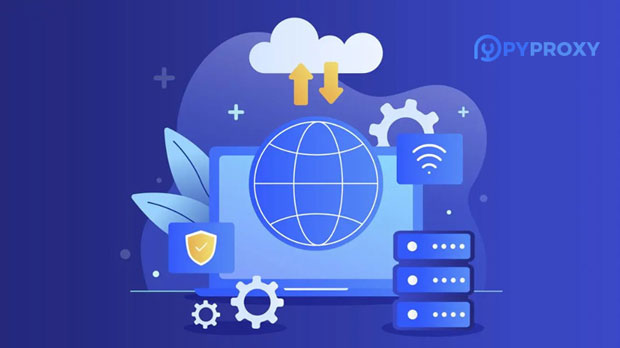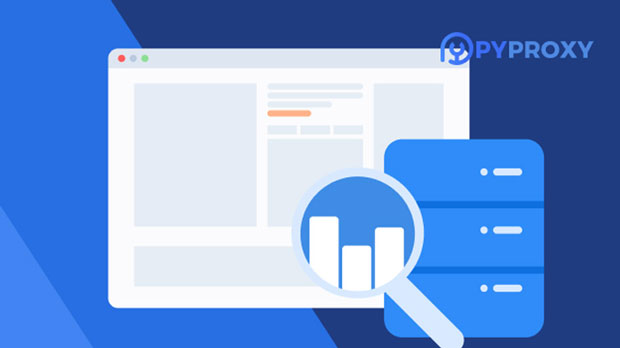How secure is the SOCKS5 proxy and does it protect privacy?
socks5 proxies are widely used as a method for improving online privacy and anonymity. They work by routing internet traffic through an intermediary server, effectively masking the user's real IP address. However, while SOCKS5 proxies offer certain privacy benefits, the question arises: just how secure are they, and can they truly protect privacy in today's digital landscape? This article will delve into the security aspects of SOCKS5 proxies, analyzing their ability to protect user privacy and comparing them with other popular tools like VPNs. It will also explore scenarios where SOCKS5 proxies are beneficial and when their limitations become a concern. What is a socks5 proxy?A SOCKS5 proxy is an internet protocol used to route network packets between client and server through an intermediary. Unlike traditional HTTP proxies that only handle web traffic, SOCKS5 can route all types of traffic, including emails, P2P file sharing, and even gaming data. This makes SOCKS5 more versatile and useful for a range of applications beyond just web browsing.The primary function of a SOCKS5 proxy is to mask the user's IP address, thus hiding the real location and identity. This is done by acting as a gateway, so websites and services only see the IP of the proxy server. SOCKS5 is known for being lightweight and relatively fast, which is one of the reasons it is favored for activities like torrenting and gaming, where speed is crucial.Security Features of SOCKS5 ProxyWhile SOCKS5 proxies offer anonymity benefits, they are not without their security limitations. To understand the overall security of SOCKS5 proxies, it's important to break down the features and flaws associated with them.1. No Encryption by Default One of the most significant security drawbacks of SOCKS5 is the lack of encryption. Unlike a VPN, which encrypts your entire internet connection, a SOCKS5 proxy does not provide built-in encryption. This means that while your IP address is hidden, your data remains unencrypted and can potentially be intercepted by malicious actors or ISPs. Without encryption, your traffic is vulnerable to various threats, especially on unsecured networks like public Wi-Fi.2. Lack of Built-in Authentication SOCKS5 proxies can be configured with authentication, but this is not mandatory. Without authentication, anyone with access to the proxy server can use it, which poses a security risk. Unauthorized use of a SOCKS5 proxy can lead to various privacy and security issues, such as potential data leaks, access to your personal information, or exposure to malicious activities like man-in-the-middle attacks.3. IP Address Masking The primary advantage of SOCKS5 proxies is the ability to hide your real IP address. This provides an additional layer of anonymity by masking your location. For those concerned about privacy, this can be a significant benefit, especially when browsing websites or using online services that track IP addresses for identification and data collection purposes.4. No DNS Leaks A well-configured SOCKS5 proxy can also prevent DNS leaks, which occur when your DNS queries are sent through an unsecured channel. If not properly configured, your DNS requests might reveal your real IP address to third-party servers. SOCKS5, by design, uses the proxy server to handle DNS requests, which can help mitigate this risk.Can SOCKS5 Protect Your Privacy?SOCKS5 proxies can certainly enhance privacy by hiding your IP address, but they have significant limitations when it comes to protecting sensitive data. The absence of encryption means that any data you send over the proxy is vulnerable to eavesdropping. For those who are concerned about privacy but don’t require complete encryption, SOCKS5 may offer a good balance between anonymity and performance. However, for users who need robust security for activities like online banking, email, or transmitting sensitive data, SOCKS5 is not sufficient on its own.SOCKS5 Proxy vs. VPN: Which is More Secure?Both SOCKS5 proxies and Virtual Private Networks (VPNs) serve to protect privacy and anonymity, but they do so in different ways. To compare the two, let’s look at their key differences in terms of security and privacy protection.1. Encryption Unlike SOCKS5 proxies, VPNs encrypt all of your internet traffic, making it far more secure. Encryption ensures that even if a malicious actor intercepts your data, they cannot read it. This is especially important for activities like online banking, logging into secure websites, or accessing sensitive information.2. Data Integrity VPNs use a protocol that ensures both the confidentiality and integrity of your data. This means that not only is your data encrypted, but it is also protected from tampering or alteration during transmission. SOCKS5 proxies, on the other hand, do not provide this level of security.3. Comprehensive Protection A VPN offers comprehensive protection for all of your internet traffic, including DNS requests, which helps to prevent DNS leaks. With SOCKS5, unless properly configured, there could still be DNS leaks, exposing your real IP address. In addition, VPNs can hide your traffic from your ISP, preventing them from monitoring your online activity, which SOCKS5 does not necessarily protect against.4. Suitability for Secure Tasks If you are involved in secure activities that require strong privacy protections, such as online banking, accessing private emails, or handling confidential business data, a VPN is generally the better option. SOCKS5 proxies are more suited for tasks where speed is more important than security, such as streaming content, torrenting, or bypassing regional restrictions on websites.When Should You Use a SOCKS5 Proxy?Despite its limitations, SOCKS5 is still a valuable tool in specific scenarios. Here are some situations where using a SOCKS5 proxy may be beneficial:1. Bypassing Geo-Restrictions SOCKS5 proxies are often used for bypassing geo-restrictions on websites or streaming platforms. Since SOCKS5 proxies route your traffic through a server located in a different country, it can make it appear as though you are browsing from that location, allowing you to access content that may be restricted in your region.2. Torrenting and P2P Sharing SOCKS5 proxies are frequently used for torrenting because they provide a faster connection than VPNs. Torrenting generally does not require the level of security provided by a VPN, and the anonymity offered by SOCKS5 (by masking the IP) is often sufficient for most users in this case.3. Gaming For gamers, SOCKS5 proxies can offer reduced latency and faster connections compared to VPNs. The lack of encryption means that there’s less overhead, which results in a smoother online gaming experience, especially in fast-paced games that require low latency.4. Privacy with Non-Sensitive Activities If you are simply browsing the internet, checking social media, or engaging in other non-sensitive activities, a SOCKS5 proxy can provide a decent level of privacy without the need for full encryption. This makes it a cost-effective choice for users who prioritize speed over security.Conclusion: Is SOCKS5 Secure Enough for Privacy Protection?In conclusion, while SOCKS5 proxies offer a certain degree of privacy and anonymity by masking your IP address, they do not provide comprehensive security, especially in terms of encryption. For users who require high levels of security and privacy, particularly when dealing with sensitive data, a VPN is generally a better option. However, for tasks like bypassing geo-restrictions, torrenting, or non-sensitive browsing, SOCKS5 proxies can be an efficient and effective tool. It's important for users to weigh the trade-off between security and speed when deciding whether to use a SOCKS5 proxy or a more secure alternative like a VPN.
2025-01-06

























































